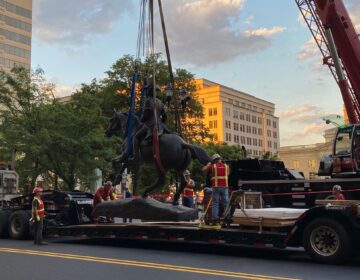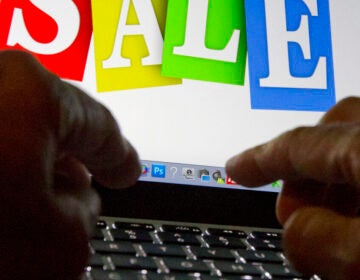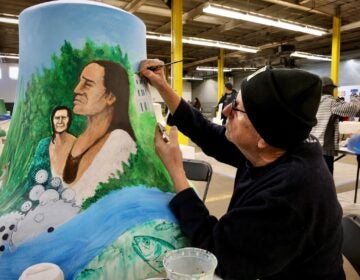Self and the City: Finding meaning in our work depends on the communities around us
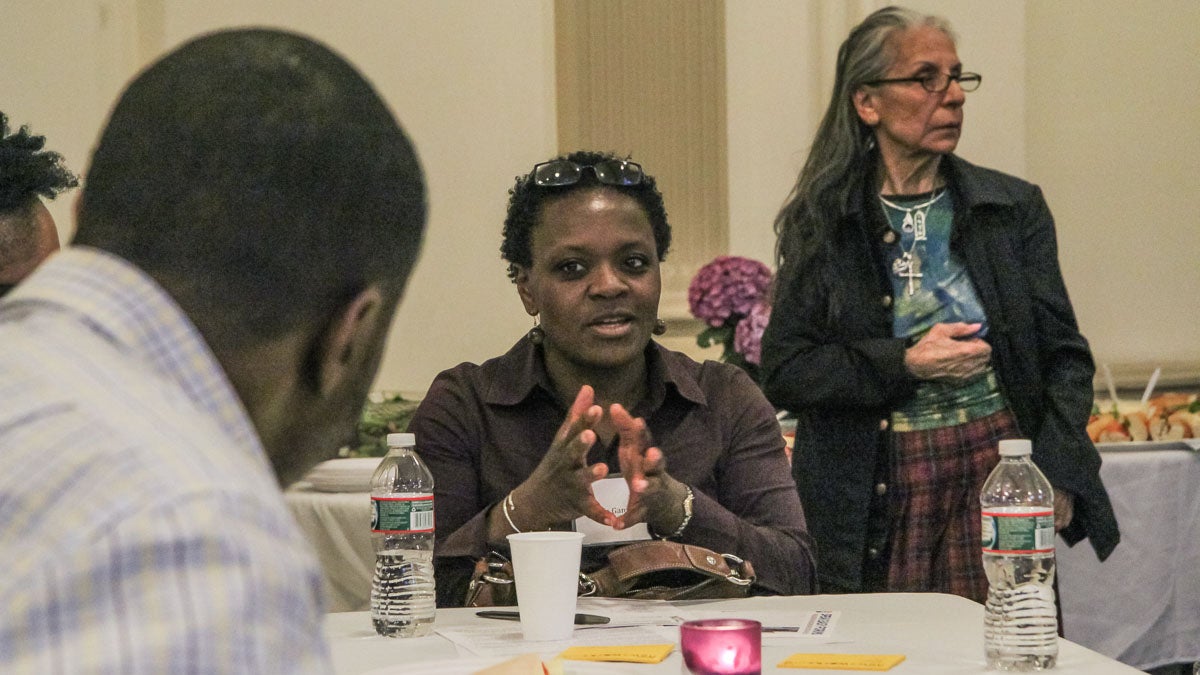
Ideas become reality only when we experience them — in our bodies, our selves, our daily lives.
So when a great bunch of Philadelphians gathered recently in the Great Hall of Neighborhood House, at Christ Church, for the WHYY event “City and Self: Bringing Humanity to Work,” that’s where we started — and I hope where we ended up, as well.
Path, place, self and city
People from across the city came together to look at the four areas that have emerged so far in the ‘Human At Work’ blog: path, place, self and city.
In other words: the physical path to work, or the larger path your work life has taken (or not); the workspace; the meaning or purpose (or lack thereof) you find in your work; and the city leadership that can help you to feel more fruitful at work.
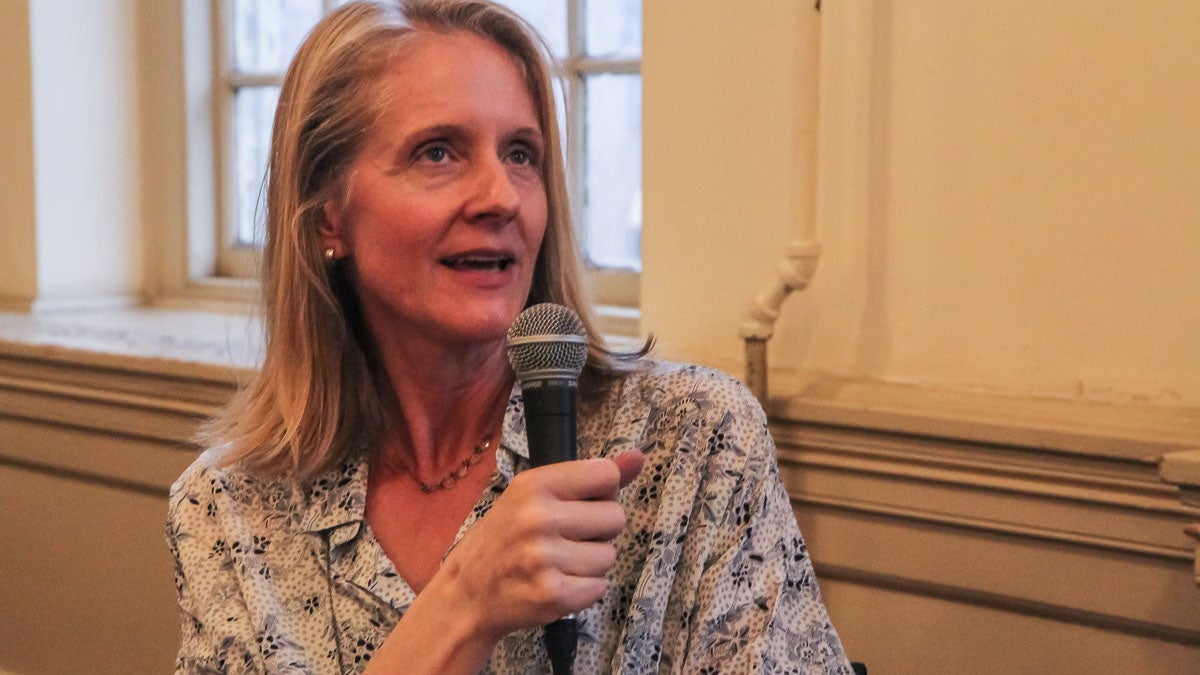
Susan leads the panelists in questions about path, place, city and self. (Kimberly Paynter/WHYY)
We had a terrific panel of Harris Steinberg, of the Lindy Institute at Drexel; Andrew Phillips, from the Charter High School for Architecture and Design; and Geoff DiMasi, from the design firm P’unk Ave. and the business/civic-service network The Junto. Chris Satullo and I moderated, and we had skilled facilitators to guide the audience into groups to listen and to talk.
And I have to say, I’ve rarely felt a space so vibrating with energy.
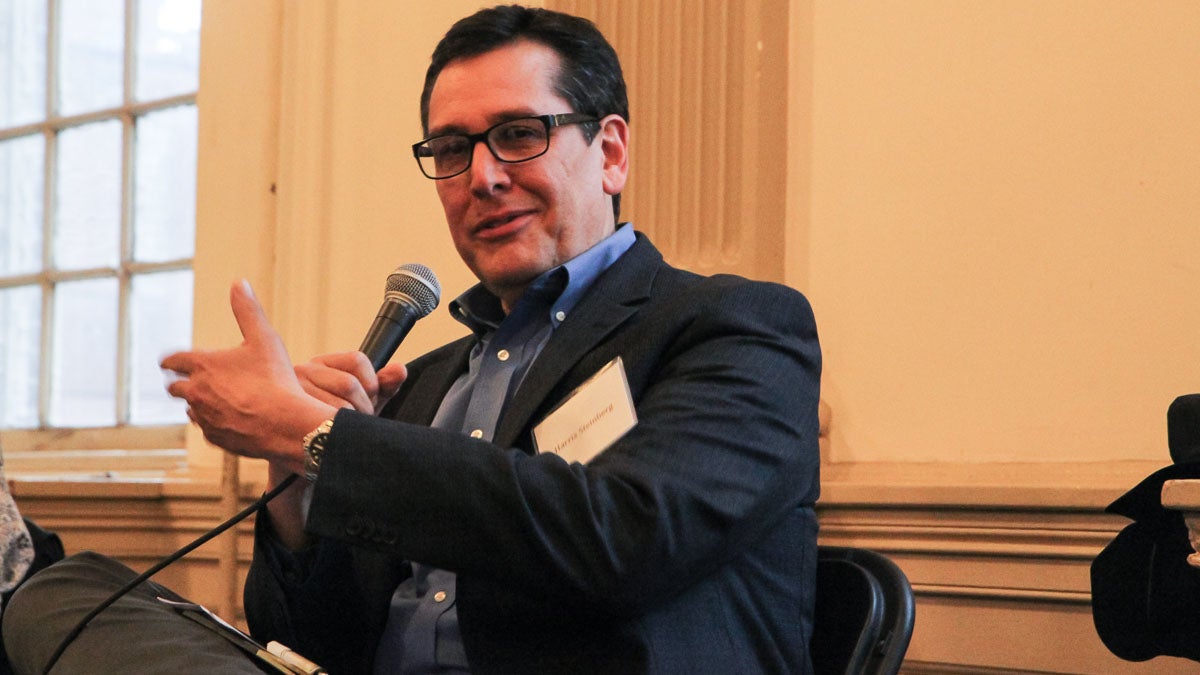
Harris Steinberg (Kimberly Paynter/WHYY)
Steinberg — who had just gotten off the plane from a business trip to Chile — led off talking about the importance of walking in the city in order to process things, and then letting where your feet lead you transform your thoughts. Phillips took us into the workspace of a classroom of students, many from underserved communities, connected with him, each other, and their curiosity to learn. What came up first for DiMasi was the question, not just of bringing himself to work, but his “best self” and what that looked like.
When the discussion shifted to the audience, people noticed what was coming to mind for them and wrote it down on little sticky notes, which they then harvested onto a large sheet for each table. The room buzzed with conversation as people began to find the real stories that were inside of and around them — the yearnings and the hopes — triggered by path, place, self and city.
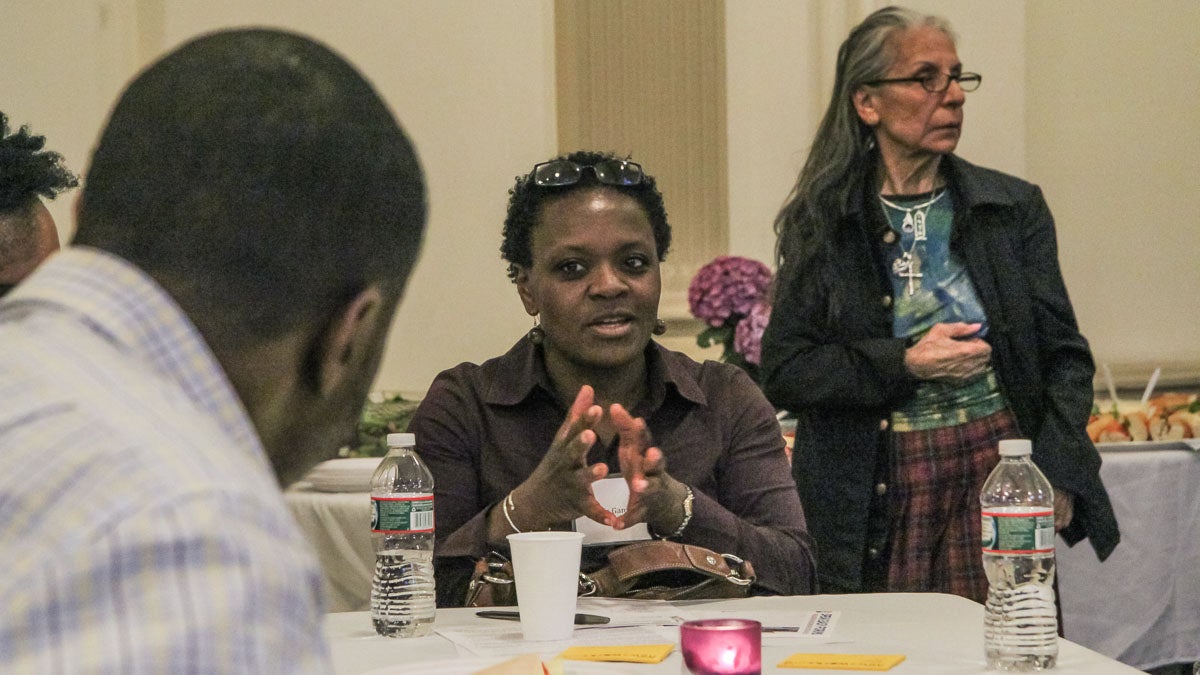
Audience members had vibrant conversations in small groups. (Kimberly Paynter/WHYY)
Toward the end of the evening, Satullo led the panel and tables in culling the connections between self and city and what could make Philadelphia a more meaningful work environment. And what was wonderful was how it took real stories to help reshape the question.
Yearnings for a connection to the city
Both from the panel and from the audience tables, we heard yearnings for beauty, meaning, acknowledgement and support of a city wider than just Center City, mutual support among workplaces and working neighborhoods, and civic leadership that looked deeply into the real learning that underlies the rubric ‘education.’ DiMasi pointed out that the inequalities and poverty in Philadelphia gives everyone a chance to be persistent in looking at it again and again, and never to look away.
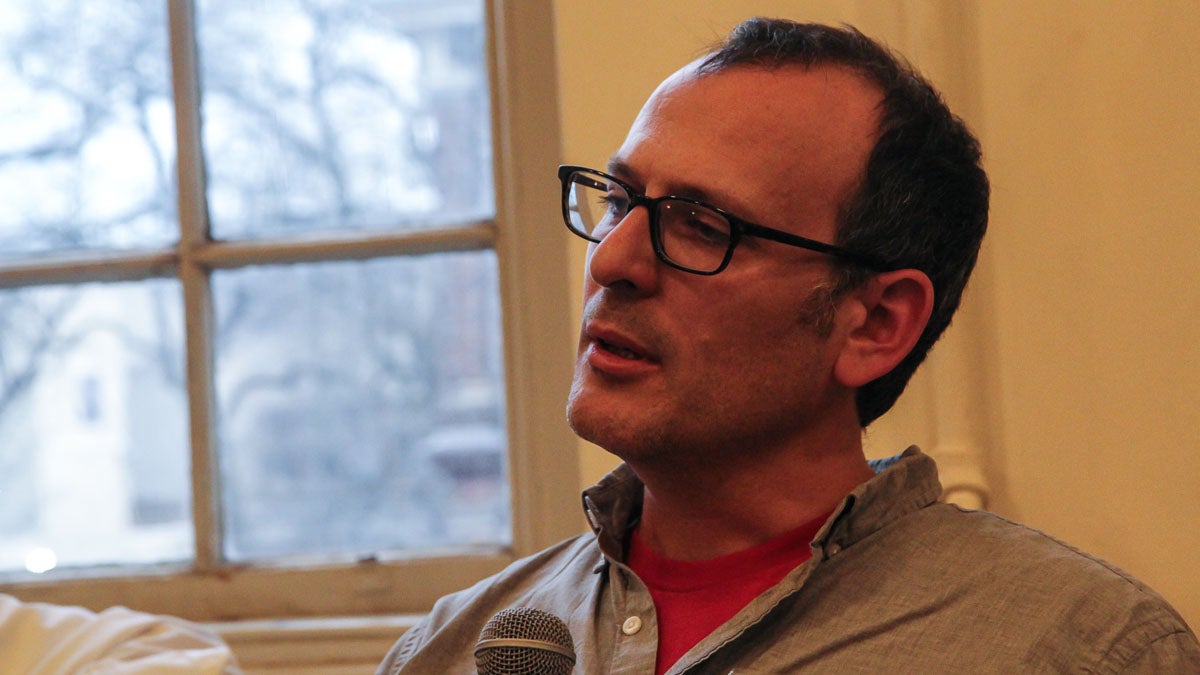
Geoff DiMasi (Kimberly Paynter/WHYY)
And among these points, we consistently heard about the importance of vulnerability that’s involved in truly doing your work well; and how creating an environment in which people are encouraged to grow as humans — including those folks who are students — is profoundly meaningful for everyone, above all, perhaps, for the person managing and creating that workspace.
In other words, the question of Philadelphia’s leadership and how it can support richer work experiences in the city left behind the two-dimensional stump speeches of a mayoral campaign and took on the flesh and bones of real lives. And from that process, new possibilities began to emerge.
Just as beautiful as the conversations were the big yellow sheets filled with sticky notes, with bits of ideas and key words written out in all kinds of handwriting as ‘footprints’ of the evening — spread out now on my apartment floor.
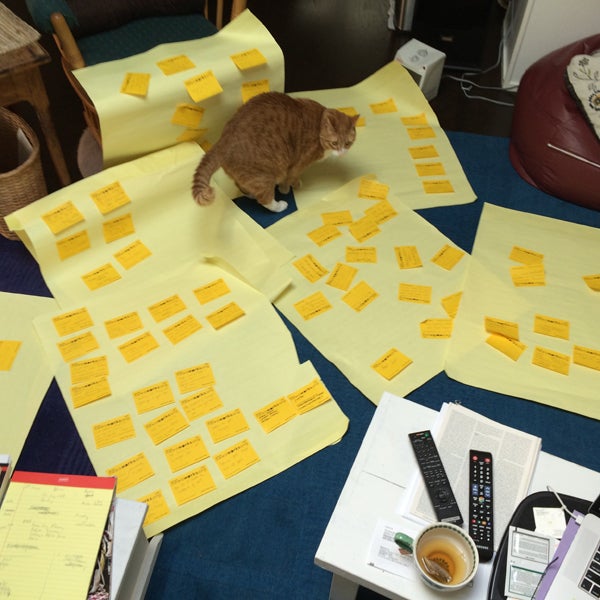
A sampling:
“How can you bring your best self when your work isn’t valued?”
“Seeing through the eyes of others.”
“Define ‘pathway’ through time.”
“How can we have this conversation without mentioning money?”
“Be willing to leave the path.”
“Strategy or door? Choose the door!”
“Beauty expresses the soul of the city.”
“Passion and policy.”
“Having a ‘path’ at work is a luxury.”
“Joy doing work with those who enjoy doing work with you.”
When we all said goodbye that evening, it felt like we had only — and reluctantly — paused the energy.
My three takeaways? First, gather up a good set of questions and some great minds, and then trust the process. Better things will happen than you could have predicted. (Thanks, team!)
Second, I hope mayoral candidates will allow themselves the courage to enter into connections between work, self, and city — whether other peoples’ stories or their own. It can be a better route to transformative decisions than the seeming (and false) certainty of promises. How can you be productively vulnerable in your work? Can you see your own job as helping create a city that encourages people to grow in their work?
And third: We’ve only just begun.
WHYY is your source for fact-based, in-depth journalism and information. As a nonprofit organization, we rely on financial support from readers like you. Please give today.


